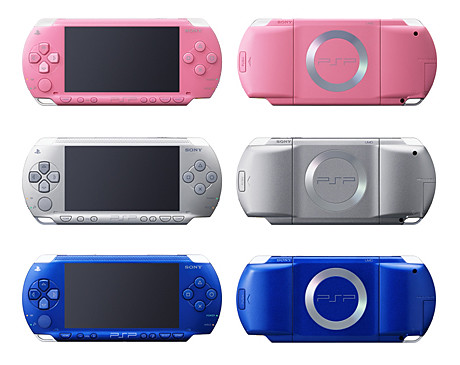Google Apps has taken the step forward from a non-commercial application, geared towards individual users, to a
business software package: Google Apps Premier Edition, which is being offered primarily to small and medium businesses for an annual fee of $50.
Google Apps has been available as a free service since August 2006. It includes the large storage-capacity service Gmail (where you can store not only emails, but chat history and even files from your desktop, with the help of a
Mozilla plug-in), Google Calendar (shared calendaring), Google Talk, which is an instant messaging and voice-over-IP application, and the Start Page feature for creating a customizable home page on a specific domain.
What exactly has Google Apps Premier Edition to offer over its free precursor?
- 10 GBs of storage per user: Offers about 100 times the storage of the average corporate mailbox, eliminating the need to frequently delete email.
- APIs for business integration: APIs for data migration, user provisioning, single sign-on, and mail gateways enable businesses to further customize the service for unique environments.
- 99.9 % uptime: Service Level Agreements for high availability of Gmail, with Google monitoring and crediting customers if service levels are not met.
- 24x7 support for critical issues: Includes extended business hours telephone support for administrators.
- Advertising optional: Advertising is turned off by default, but businesses can choose to include Google's relevant target-based ads if desired.
- $50 per user account per year: Simple and affordable annual fee makes it practical to offer these applications to everyone in the organization.
Google also is adding mobile access to e-mail accounts through BlackBerry
wireless handheld devices.
As was the case last year, when Google Apps was launched, the analysts' dilemmas aren't revolving around the intrinsic value of the Google Apps Premier Edition suite, but rather they consist of whether this is an attempt to challenge the Microsoft's domination in the office space. Is Google Apps Premier Edition being developed as an alternative to MS Office, the software suite which managed to indisputably dominate for years the work environment of virtually any kind of business? Let's see!
Which are Google Apps Premier Edition's advantages:
1. It's not dependant on a specific OS. No matter if the PC runs Linux or Windows, Google Apps is only reliant on the
Internet connection and a browser, which is certainly an entirely different approach when compared to MS Office, which works in symbiosis with Windows (and recently, MacOS)
2. Availability. No matter where you work from, Google Apps offers instant access to the documents, calendar appointments or e-mails you need. This means yet another step forward from the mobile office concept, which still needs a notebook in addition to an Internet connection.
3. The possibility to develop new functionality. As is the case with Google Maps, the companies using
Google Apps Premier Edition can access the APIs for data migration, user provisioning, single sign-on, and mail gateways. What does that exactly mean? Starting off from basic functions, any company can eventually adapt and develop new functionalities, according to its operating specifics.
4. Collaboration is simpler. Google Docs, Google Calendar and Google Spreadsheets allow, in a very simple and neat way, the collaboration between many users, who can work together to create, modify and develop documents.
5. Web presence creation. Google Page Creator is one of the most interesting applications geared towards the fast development of a Web presence for any company which doesn't need a very complicated website.
Obviously, as is the case with any software, Google Apps Premier Edition is not perfect and there still are many downsides to it. Which would then be Google Apps' disadvantages, noted by its critics?
1. The lack of an alternative to Microsoft's
PowerPoint application, a software much used and appreciated in the business environment.
2. The dependence on an Internet connection can also be a vulnerability, because today not anywhere on the globe you can find a reliable and stable connection. Google Apps does not run offline, which raises many problems for people who don't have an always on Internet connection.
3. The fact that all documents are stored on Google
servers can make some worry about their data's confidentiality or about the possibility of a hacker's attack. This can be especially sensitive for companies dealing with business secrets, such as research companies, which are always worrisome about commercial espionage. However, it's certain Google will do its best to ensure the data's security.
All these things considered, we must ask ourselves again if Google Apps Premier Edition is really an attempt by Google to replace
Microsoft Office. If you were expecting a yes or no answer, you're in for a disappointment.
First of all, Google Apps relies on an entirely different concept from Microsoft Office. In Google Apps, the PC is considered an extension of the Internet, merely an access point towards it. That is not the case with Microsoft Office, which was developed with the PC as the center, having the Internet connection as an extension. In other words, comparing Microsoft's Office with Google Apps is much like comparing apples and peaches.
Secondly, we should keep in mind that Google Apps has not reached age 1, and it would be unfair to compare it with a software suite which was in continuous development for almost 15 years.
What we have to admit is that Google Apps is a serious contender, and its most important strength is that it tries to do things differently. That could make it carve in the sales of Microsoft's Office.
All things being equal, Google Apps still needs a few development cycles before being a full-fledged replacement to Microsoft Office, but for Microsoft, Google Apps should set off alarms. There are other ways to get things done, and Google Apps Premier Edition proves the Internet offers new means which the Redmond company should take much more seriously if it wants to maintain the upper hand over its competition.



 One of Sony's biggest problems has been supply. Not just with the PS3, but many
One of Sony's biggest problems has been supply. Not just with the PS3, but many 







